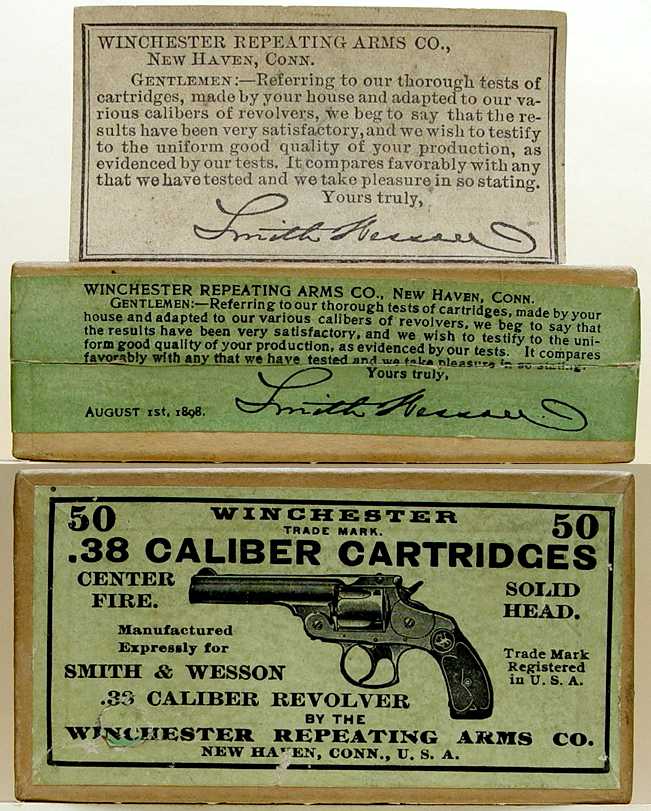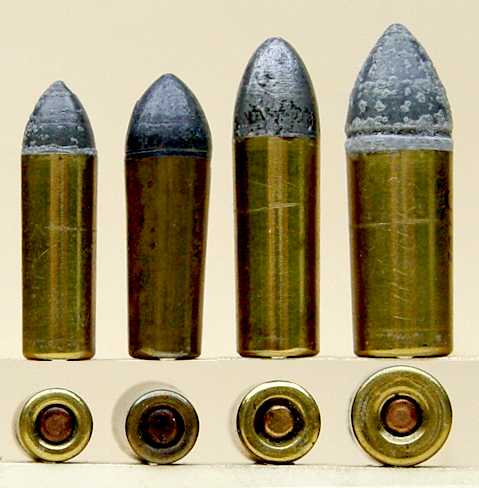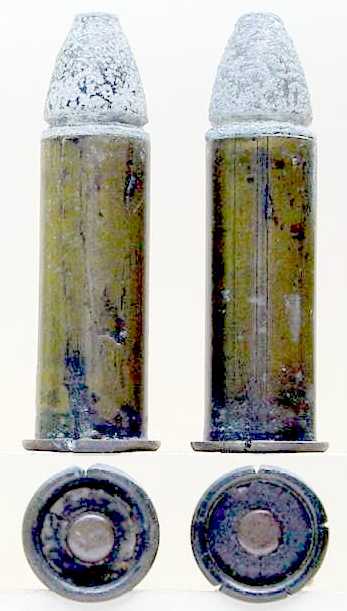| Contents
Home
General
Info
Ordering
Info
Contact us
Cartridge
Lists
Patent & Miscellaneous
Rim Fire
Center Fire Pistol
Center Fire Rifle
Metric Rimfire,
Pistol&Rifle
British Pistol and Rifle
Shotgun Shells
Posters
This Month's Picture Page
Index to
Picture Pages
Prior Picture Pages:
*
September 2003
*
October 2003
*
November 2003
*
December 2003
*
January 2004
*
February 2004
*
March 2004
*
April 2004
*
May 2004
*
June 2004
*
July 2004
*
August 2004
*
September 2004
*
October 2004
*
November 2004
*
December
2004
*
January 2005
*
February
2005
*
March
2005
*
April
2005
*
May 2005
* June 2005
* July 2005
*
August 2005
*
September
2005
*
October 2005
*
November 2005
*
December 2005
*
January 2006
*
February 2006
*
March 2006
*
April 2006
*
May 2006
*
June 2006
*
July 2006
Links to Other Sites
Cartridge Collectors Organizations:
IAA
ECRA
SAAACA
Auctions:
Auction
Arms
E-Bay
Ward's Collectibles
Sold USA
Books:
Armory
Publications
WCF Publications
Other Collector's Sites:
Curtis Steinhauer
|
Home of the Old Ammo Guy's Virtual
Cartridge Trading Table
Featuring a wide range of antique,
obsolete, and modern ammunition for collectors
Picture
Page
August
2006
An interesting Winchester box insert....
.
.Here's a Winchester box in a caliber that probably offers more box
variations than probably any other except possibly its little brother the
.32 S&W. What I find most interesting about this box is the insert that came
with it, which has the same Smith & Wesson company testimonial that appears
on the side sealing labels of a couple of decades worth of these boxes
beginning, I assume, in late 1898, based on the August 1st, 1898 date on
this label. It seems a little odd that Winchester would include the insert
in the box when the exact same information was already on the label, which
leads me to believe that the insert was the original method employed for the
testimonial, and the company probably used up their remaining supply of
inserts by including them in the first of their boxes with this side label.
Consequently, I would guestimate that this box was made between late-1898
and early-1899.
.
The cartridges for Colt's Thuer
conversions........
 I
included a picture of the two cartridges in the middle of this picture on my
August 2004 picture page,
but am now including the other two variations of the Thuer cartridges that
make up the complete set. Having said that, I should point out that at least
one other variation may exist, that being an experimental Frankford Arsenal
inside-primed .44, but essentially these are the four commonly recognized
ones. They are, from the left the .31 Pocket, .36 Pocket Navy, .36 Navy, and
.44 Army. Alexander Thuer received patent # 82,258 for his system of
converting percussion revolver cylinders to take a front-loading metallic
cartridge on September 15, 1868. The purpose for using a front-loading
design was to circumvent the 1855 Rollin White bored through cylinder patent
that allowed Smith & Wesson exclusive rights to the rear-loading cylinder
revolver. The peculiar nature of the front loading cartridges, coupled with
the complicated cylinder arrangement for loading the cartridges and ejecting
the fired cases proved to be unpopular; as a result, production of the Thuer
conversions was limited. Norm Flayderman (Flayderman's Guide to Antique
American Firearms and Their Current Values) puts the number at about 5000.
R. Bruce McDowell (A Study of Colt Conversions) believes that the 5000
number is 'grossly exaggerated', based on the limited number of surviving
examples. His reasoning makes sense, as the examples observed tend to be in
good condition, indicating that many, if not all, saw little use, so it is
not likely that many of them were worn out from use and consequently
discarded. Nor is it likely that Colt had intended their 'New Patent
Metallic Central Fire Cartridge Revolvers', as they were referred to in
advertisements, to be a big seller
but, instead, as a stopgap means to use up some of the accumulation of
percussion revolver parts that they had on hand following the Civil War
until a better design could be introduced once the Rollin White patent
expired in April 1869. That better design was the Richards conversion which
was being perfected by Colt factory employee Charles B. Richards shortly
after the Thuer conversions first went into production. The most common of
the Thuer conversion revolvers were the .44 Army models; the least common
were the .31 Pocket models. Of the cartridges, which were produced only
until 1870, the least common is the short .36 Pocket I
included a picture of the two cartridges in the middle of this picture on my
August 2004 picture page,
but am now including the other two variations of the Thuer cartridges that
make up the complete set. Having said that, I should point out that at least
one other variation may exist, that being an experimental Frankford Arsenal
inside-primed .44, but essentially these are the four commonly recognized
ones. They are, from the left the .31 Pocket, .36 Pocket Navy, .36 Navy, and
.44 Army. Alexander Thuer received patent # 82,258 for his system of
converting percussion revolver cylinders to take a front-loading metallic
cartridge on September 15, 1868. The purpose for using a front-loading
design was to circumvent the 1855 Rollin White bored through cylinder patent
that allowed Smith & Wesson exclusive rights to the rear-loading cylinder
revolver. The peculiar nature of the front loading cartridges, coupled with
the complicated cylinder arrangement for loading the cartridges and ejecting
the fired cases proved to be unpopular; as a result, production of the Thuer
conversions was limited. Norm Flayderman (Flayderman's Guide to Antique
American Firearms and Their Current Values) puts the number at about 5000.
R. Bruce McDowell (A Study of Colt Conversions) believes that the 5000
number is 'grossly exaggerated', based on the limited number of surviving
examples. His reasoning makes sense, as the examples observed tend to be in
good condition, indicating that many, if not all, saw little use, so it is
not likely that many of them were worn out from use and consequently
discarded. Nor is it likely that Colt had intended their 'New Patent
Metallic Central Fire Cartridge Revolvers', as they were referred to in
advertisements, to be a big seller
but, instead, as a stopgap means to use up some of the accumulation of
percussion revolver parts that they had on hand following the Civil War
until a better design could be introduced once the Rollin White patent
expired in April 1869. That better design was the Richards conversion which
was being perfected by Colt factory employee Charles B. Richards shortly
after the Thuer conversions first went into production. The most common of
the Thuer conversion revolvers were the .44 Army models; the least common
were the .31 Pocket models. Of the cartridges, which were produced only
until 1870, the least common is the short .36 Pocket
 Navy
that was intended for the Model 1862 Police and Pocket Navy revolvers. Navy
that was intended for the Model 1862 Police and Pocket Navy revolvers.
The two primer tins in this picture hold the primers that are used for
the Thuer cartridges. They were made by Eley Brothers, London, and are
essentially just tiny percussion caps which fit over a nipple-like
projection in the head of the cartridge, just as a standard cap would be
placed on one of the nipples on the cylinder of a percussion pistol.
.
.
.
.
.
Close up and personal with two Confederate
Morse cartridges......
 Confederate
.50 Morse cartridges don't tend to be found in multiples, but the two
pictured here were among five that were owned by a gun collector in
Virginia, along with a leather cartridge box and the Morse carbine they were
found with. In 1983, three of the cartridges were given by the gun collector
to the gentleman I got these two from. They are so much alike, from the
profiles and condition of their bullets to the dimensions of their cases,
that I can't help but believe that they were manufactured at the same time
and on the same equipment. The cases were made from drawn brass tubing and
exhibit flaws that were produced during the manufacturing process. The one
on the left has areas where the outer surface of the brass has delaminated,
giving it the appearance of having been made from thin brass foil. Three
striations running the full length of the case can be clearly seen on the
one on the right. Both are primed with common musket caps, and their gutta
percha sealing plugs are still in place in the bases. Confederate
.50 Morse cartridges don't tend to be found in multiples, but the two
pictured here were among five that were owned by a gun collector in
Virginia, along with a leather cartridge box and the Morse carbine they were
found with. In 1983, three of the cartridges were given by the gun collector
to the gentleman I got these two from. They are so much alike, from the
profiles and condition of their bullets to the dimensions of their cases,
that I can't help but believe that they were manufactured at the same time
and on the same equipment. The cases were made from drawn brass tubing and
exhibit flaws that were produced during the manufacturing process. The one
on the left has areas where the outer surface of the brass has delaminated,
giving it the appearance of having been made from thin brass foil. Three
striations running the full length of the case can be clearly seen on the
one on the right. Both are primed with common musket caps, and their gutta
percha sealing plugs are still in place in the bases.
The dimensions of these two are as follows:
Left:
bullet - .534"
neck - .542"
base - .550"
rim - .680"
case length - 1.506"
overall length - 2.142"
Right:
bullet - .533"
neck - .546"
base - .550"
rim - .678"
case length - 1.509"
overall length - 2.143"
Comparing four other .50 Morse
cartridges for which dimensions were provided that I found in several
different publications reveals that there didn't appear to be very close
tolerances applied to the production of these cartridges, as all differed
fairly significantly from each other in one or more of the dimensions. The
high and low extremes of the dimensions of the four cartridges are as follows:
bullet - .494" to .530"
neck - .539" to .547"
base - .535" to .553"
rim - .623" to .673"
case length - 1.500" to 1.573"
overall length - 2.143" to 2.160"
Note that the dimensions of the
two pictured cartridges all fall very close to, if not within, these ranges.
I would like hear from others who have examples of the Confederate Morse
cartridge in their collections; and would very much appreciate it if they
would provide me with the dimensions and descriptions of their cartridges.
.
.
|


 I
included a picture of the two cartridges in the middle of this picture on my
I
included a picture of the two cartridges in the middle of this picture on my
 Navy
that was intended for the Model 1862 Police and Pocket Navy revolvers.
Navy
that was intended for the Model 1862 Police and Pocket Navy revolvers. Confederate
.50 Morse cartridges don't tend to be found in multiples, but the two
pictured here were among five that were owned by a gun collector in
Virginia, along with a leather cartridge box and the Morse carbine they were
found with. In 1983, three of the cartridges were given by the gun collector
to the gentleman I got these two from. They are so much alike, from the
profiles and condition of their bullets to the dimensions of their cases,
that I can't help but believe that they were manufactured at the same time
and on the same equipment. The cases were made from drawn brass tubing and
exhibit flaws that were produced during the manufacturing process. The one
on the left has areas where the outer surface of the brass has delaminated,
giving it the appearance of having been made from thin brass foil. Three
striations running the full length of the case can be clearly seen on the
one on the right. Both are primed with common musket caps, and their gutta
percha sealing plugs are still in place in the bases.
Confederate
.50 Morse cartridges don't tend to be found in multiples, but the two
pictured here were among five that were owned by a gun collector in
Virginia, along with a leather cartridge box and the Morse carbine they were
found with. In 1983, three of the cartridges were given by the gun collector
to the gentleman I got these two from. They are so much alike, from the
profiles and condition of their bullets to the dimensions of their cases,
that I can't help but believe that they were manufactured at the same time
and on the same equipment. The cases were made from drawn brass tubing and
exhibit flaws that were produced during the manufacturing process. The one
on the left has areas where the outer surface of the brass has delaminated,
giving it the appearance of having been made from thin brass foil. Three
striations running the full length of the case can be clearly seen on the
one on the right. Both are primed with common musket caps, and their gutta
percha sealing plugs are still in place in the bases.